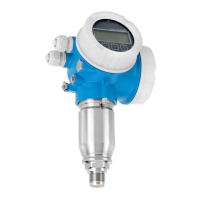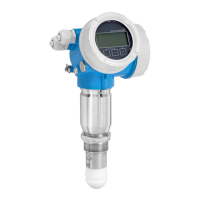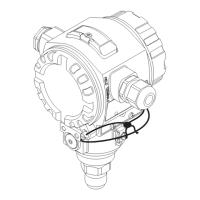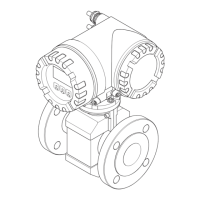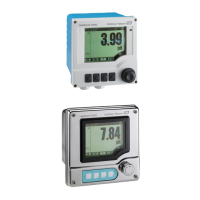Micropilot FMR50/FMR51/FMR52/FMR53/FMR54/FMR56/FMR57 FOUNDATION Fieldbus The "Expert" menu
Endress+Hauser 79
3.2.9 Expert → Sensor → Gas phase compensation
Overview
High pressures reduce the propagation velocity of the measuring signals in the gas/vapor
above the fluid. This effect depends on the kind of gas/vapor and of its temperature. This
results in a systematic measuring error that gets bigger as the distance increases between
the reference point of the measurement (flange) and the product surface.
Influence of a gas layer
The following table illustrates this measured error for a few typical gases/vapors (with
regard to distance; a positive value means that too large a distance is being measured):
Gas layer Temperature Pressure
°C °F 1 bar (14.5 psi) 10 bar (145 psi) 50 bar (725 psi) 100 bar (1 450 psi) 160 bar (2 320 psi)
Air/
Nitrogen
20 68 0.00 % 0.22 % 1.2 % 2.4 % 3.89 %
200 392 –0.01 % 0.13 % 0.74 % 1.5 % 2.42 %
400 752 –0.02 % 0.08 % 0.52 % 1.1 % 1.70 %
Hydrogen 20 68 –0.01 % 0.10 % 0.61 % 1.2 % 2.00 %
200 392 –0.02 % 0.05 % 0.37 % 0.76 % 1.23 %
400 752 –0.02 % 0.03 % 0.25 % 0.53 % 0.86 %
Water
(saturated
steam)
100 212 0.02 % - - - -
180 356 - 2.1 % - - -
263 505.4 - - 8.6 % - -
310 590 - - - 22 % -
364 687 - - - - 41.8 %
Types of gas phase compensation
The influence of the gas phase can be compensated for in the following ways:
• Gas phase compensation with reference signal
2)
(→ 80)
• Constant gas phase compensation factor (→ 81)
• For PROFIBUS PA and FOUNDATION Fieldbus: Compensation with external pressure
measurement (→ 82)
2) This type of gas phase compensationis not recommended for Micropilot.

